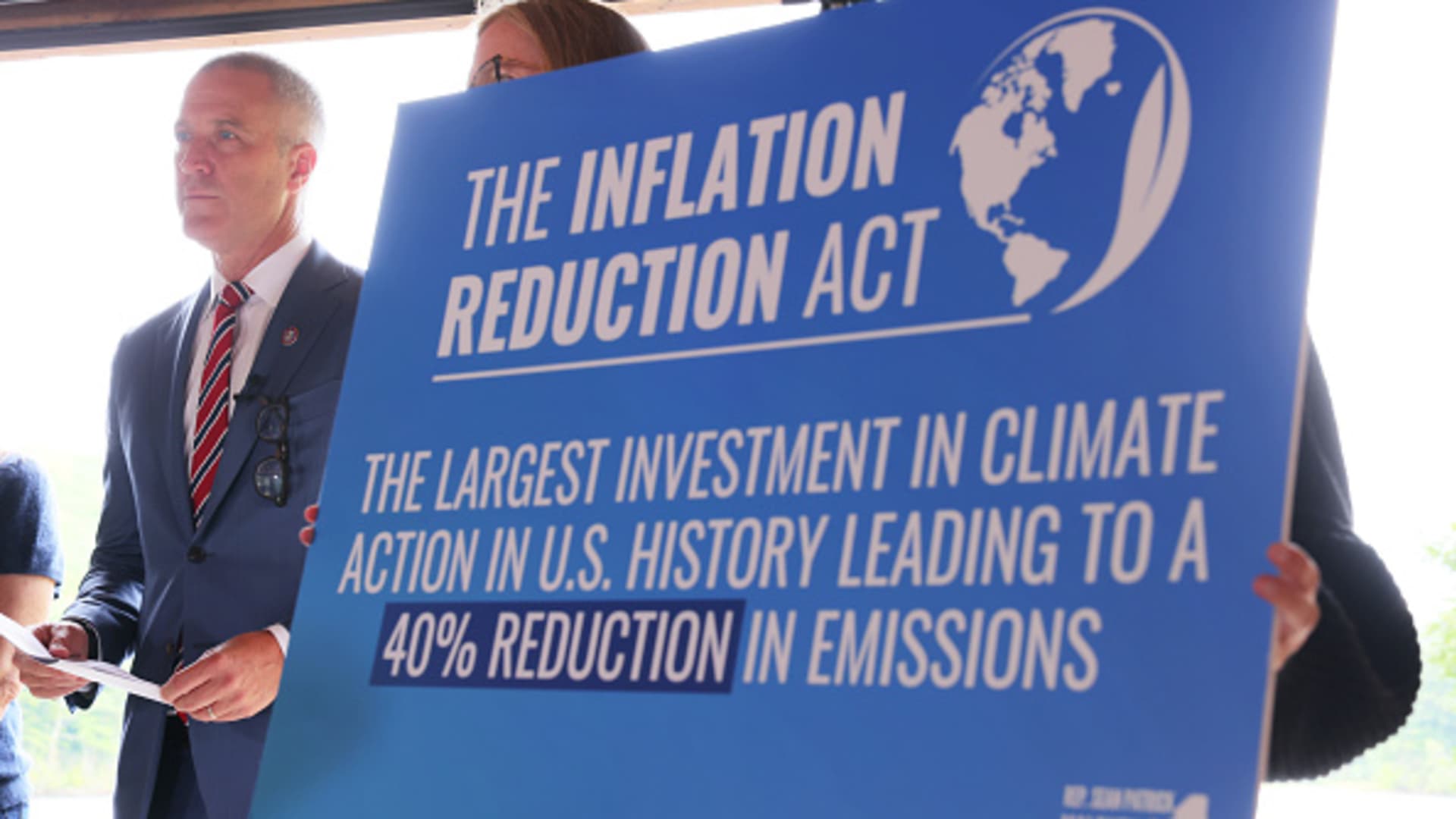WASHINGTON — The Treasury Department on Wednesday announced that billions of dollars slated for investments in clean energy, electric vehicles and batteries under the Inflation Reduction Act will go to relatively underserved communities throughout the country.
The announcement comes as the IRA, the Biden administration’s landmark law targeting manufacturing, infrastructure and climate change, turns one year old. The more than $500 billion in announced investments, $200 billion of which is in the clean energy sector, is a key goal of the legislation, according to the Treasury.
A senior Treasury official told reporters on Wednesday that the agency is also seeing meaningful private investment in the efforts. The indicators rebut old notions that private investment suffers when large public initiatives go into effect, the official said.
A Treasury report released Wednesday attributed the projected outcomes to “modern supply-side economics,” Treasury Secretary Janet Yellen’s term to describe policies that prioritize economic growth along with climate change or inequality.
Concrete data on the true effectiveness of IRA investments will not be available for several years, but available public figures show that companies plan to take advantage of bonuses in the law to invest in disadvantaged communities, according to the report.
The report cites data on the Biden-Harris administration’s Invest.Gov website that shows that nearly 90% of the announced clean technology investments are in counties with below average weekly wages.
Over 80%, are also in counties with lower than average college graduation rates, 65% are in counties with above average overall poverty rates and an equal percentage are in counties where a lower than normal share of the population is employed, according to the report.
The Treasury Department also found that the CHIPS and Science Act, a second arm of President Joe Biden’s economic agenda that will bolster semiconductor manufacturing in the U.S., is “an important contributor” to the building of manufacturing facilities. Construction more than doubled since 2021 by June of this year, especially in the technology sector, according to the report.
Though early reporting suggests the Biden administration policies could support long-term economic growth, some Republican lawmakers panned the IRA’s touted benefits on its first anniversary.
Rep. Jason Smith, R-Mo., chairman of the House Ways and Means Committee and an open critic of the legislation, said the IRA is a “massive transfer of tax dollars” from the working class to the wealthy, big banks and large corporations. He also contended it would benefit the Chinese Communist Party, as the U.S. relies on Chinese imports of key inputs for clean energy technology.
“The Biden Administration is using the IRA to weaken our trade rules, kill American jobs and spend billions to keep America dependent on China for critical minerals,” Smith said in a statement released Wednesday.
